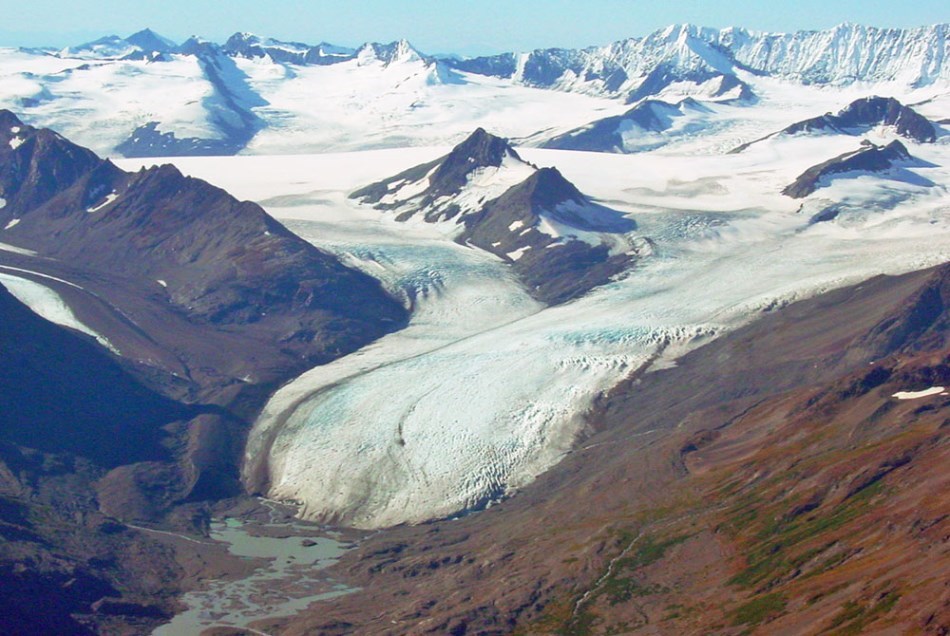Warmer temperatures and changes in precipitation over the past century have thinned the Bering Glacier by several thousand meters. Since 1900 the terminus has retreated as much as 12 km (7.5 mi). The Bering Glacier exhibits "surges", acceleration events of the flow rate of the glacier, every 20 years or so. During these periods the glacier terminus advances. The surges are generally followed by periods of retreat, so despite the periodic advances the glacier has been shrinking overall. Most glaciers along the Alaskan coast have been retreating along with the Bering Glacier.
.jpg)
The glacial retreat has an interesting side effect, an increase in the frequency of earthquakes in the region. The Wrangell and St. Elias mountain ranges that spawn the Bering Glacier were created by the collision of the Pacific and North American tectonic plates. The weight of the vast amount of ice in the Bering Glacier is enough to depress the Earth's crust, stabilizing the boundary between the two plates. As the glaciers lose mass, the pressure of the ice is diminished. This reduced compression allows the rocks along faults to move more freely, resulting in more earthquakes.
.jpg)
Scientists from the Michigan Tech Research Institute, working with U.S. Geological Survey and U.S. Bureau of Land Management have recently discovered that the glacier is releasing approximately 30 cubic kilometres (7.2 cu mi) of water a year, more than twice the amount of water in the entire Colorado River.
.jpg)
Meltwater at the terminus collects in Vitus Lake, which flows via the Seal River to the Gulf of Alaska.
According to wikipedia








